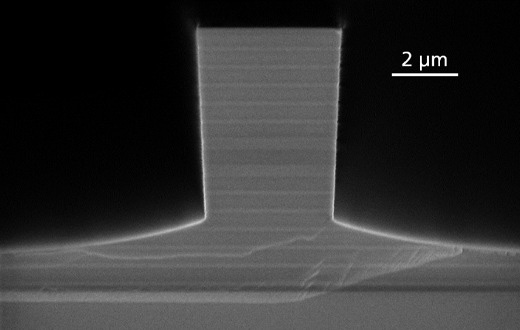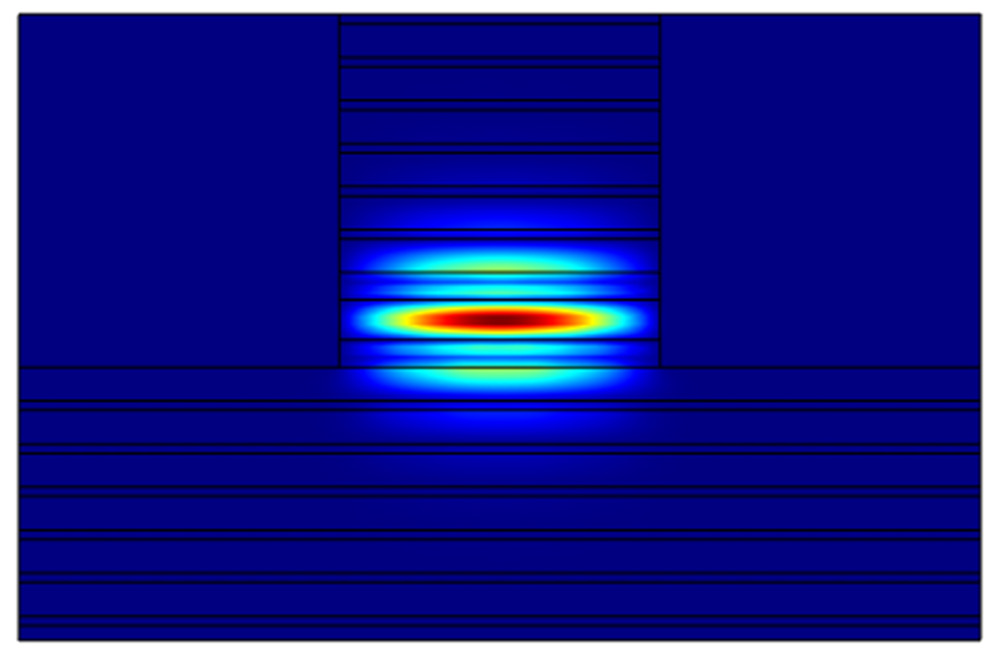News: Optoelectronics
4 March 2021
Fraunhofer IAF researches compact on-chip photon pair sources for quantum technologies
Fraunhofer Institute for Applied Solid State Physics (IAF) of Freiburg, Germany has started a project on compact on-chip sources for entangled photons, which are an important component for the realization of industrial quantum technology applications.
In the project QuoAlA (‘Quantum entangled photon pair source at telecom wavelength based on AlGaAs Bragg reflection waveguides’), scientists are researching waveguides based on aluminium gallium arsenide (AlGaAs) as sources for generating entangled photons. AlGaAs enables a particularly compact design and chip integration.
The project started in February and is funded by the German Federal Ministry of Education and Research (BMBF) within the framework program of the Federal Government ‘Quantum technologies—from basic research to market’ as WiVoPro (Scientific Preliminary Project) (FKZ: 13N15480). The aim of these preliminary projects is to study scientific issues with regard to future industrial applications in photonics and quantum technology. They are intended to complement existing research funding and build a bridge between basic research and industry-led collaborative funding.
Applications of quantum technology are based on various quantum phenomena and physical laws to which elementary particles are subjected. These include the effect of entangled photons, on which promising concepts for high-precision sensor technology and secure quantum communication are based. To bring these technologies into application, compact and efficient sources of entangled photon pairs are needed that can be integrated into photonic circuits.
The main components of quantum photonic systems (such as mirrors, beam splitter and phase shifters) can now all be realized in integrated form. However, this does not yet apply to the light sources and detectors that are required as well. “Our goal is now to integrate all the functions needed for quantum communication, i.e. the generation, manipulation and detection of single and entangled photons, into just one chip,” says Dr Thorsten Passow, project manager at Fraunhofer IAF. With the project QuoAlA, the researchers are taking a first step with regard to light sources.
AlGaAs Bragg reflection waveguides as photon pair sources
The focus of QuoAlA is on fundamental research of AlGaAs-based photon sources and their epitaxial fabrication. The aim is to generate photon pairs with a high quality of entanglement at an exactly defined wavelength. The target wavelength is 1550nm, i.e. within the telecom range (1500-1600nm).

Picture: SEM image of the facet of a cleaved AlGaAs Bragg reflection ridge waveguide © Fraunhofer IAF.
AlGaAs is a promising material for photon pair sources for several reasons. For example, it has nonlinear properties. In a material with nonlinear properties, a photon can spontaneously split into two photons at high light intensity due to an optical effect. Such light particle pairs can be quantum mechanically entangled.
Potential for particularly compact design
Furthermore, AlGaAs Bragg reflection waveguides allow the integration of other optical and electronic components at the chip level. “A unique feature of the technology used in the project QuoAlA is the potential to integrate a pump laser diode,” emphasizes Passow. “This makes a particularly compact design possible,” he adds. Reducing the size, weight and power of the components would satisfy an essential requirement for the realization of practical applications.
For use as a source in telecommunications, it must be possible to adjust the wavelength of the photons very precisely because the wavelength spacing of the channels is less than 1nm. The wavelength of the generated photons depends very sensitively on the epitaxially produced layer structure of the waveguides. Therefore, the project focuses on the accuracy of the epitaxy of AlGaAs-based Bragg reflection waveguides with regard to the wavelength of the generated entangled photons.

Picture: Simulated profile of a Bragg reflection light wave mode in an AlGaAs Bragg reflection ridge waveguide © Fraunhofer IAF
The AlGaAs waveguide structures in the project benefit from Fraunhofer IAF’s decades of experience in the epitaxy of high-quality GaAs-based heterostructures as well as in process technology for the realization of waveguide structures in various III-V semiconductor materials. In addition, the scientists are using software for the optical simulation of Bragg reflection waveguides that they previously developed in the project NESSiE (‘Nonlinear waveguides for quantum entangled sources at telecom wavelength’), which ran during 2019-2020 and was coordinated by the Fraunhofer Centre for Applied Photonics CAP.
www.iaf.fraunhofer.de/en/researchers/optoelectronic-devices/quoala.html









